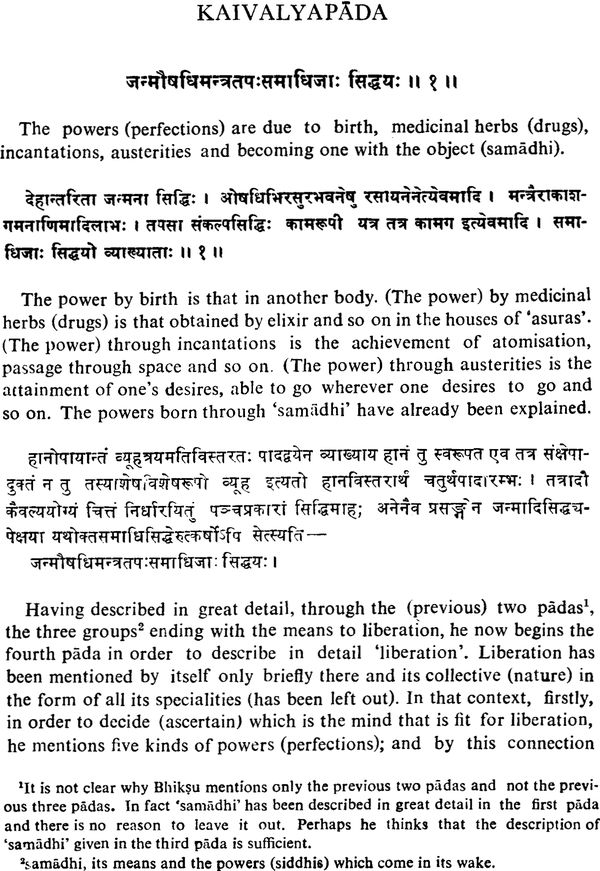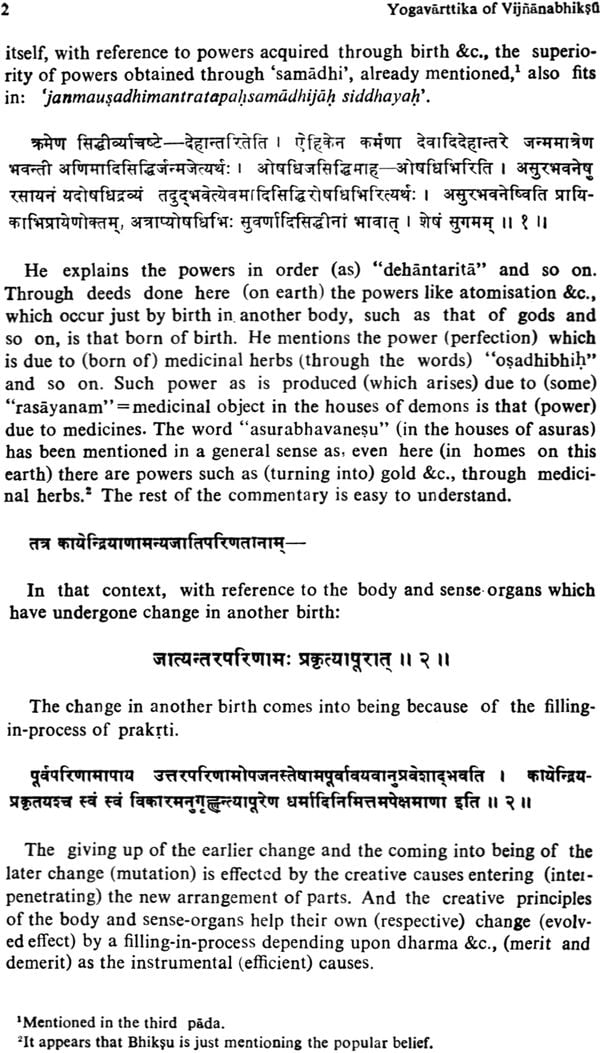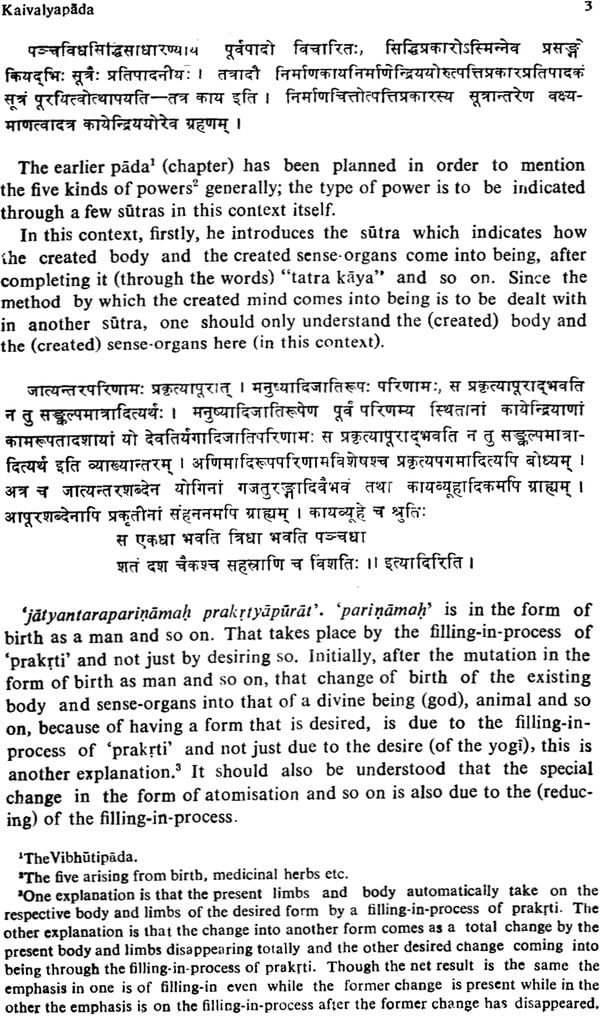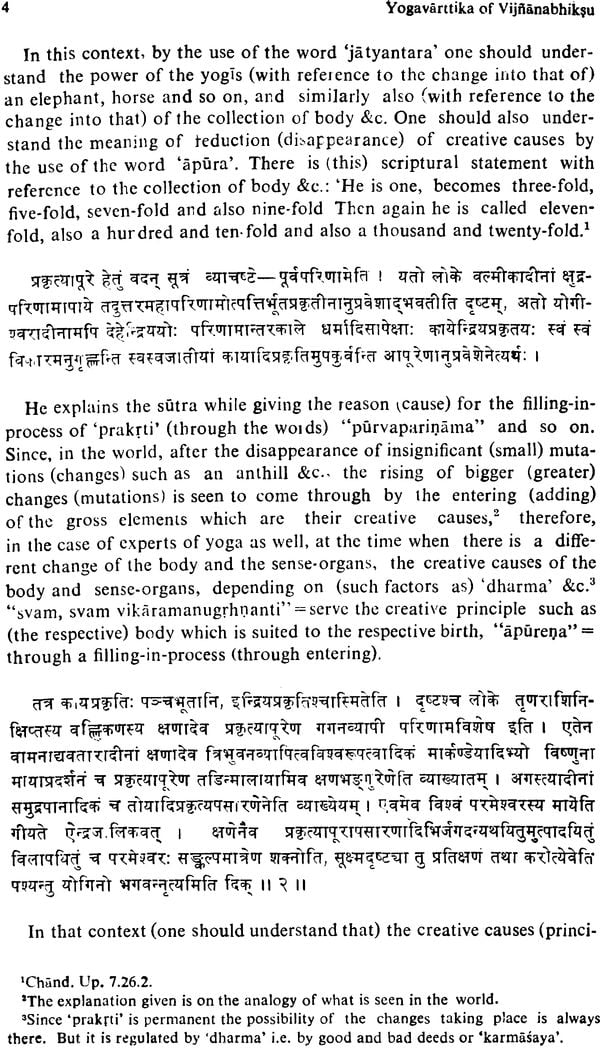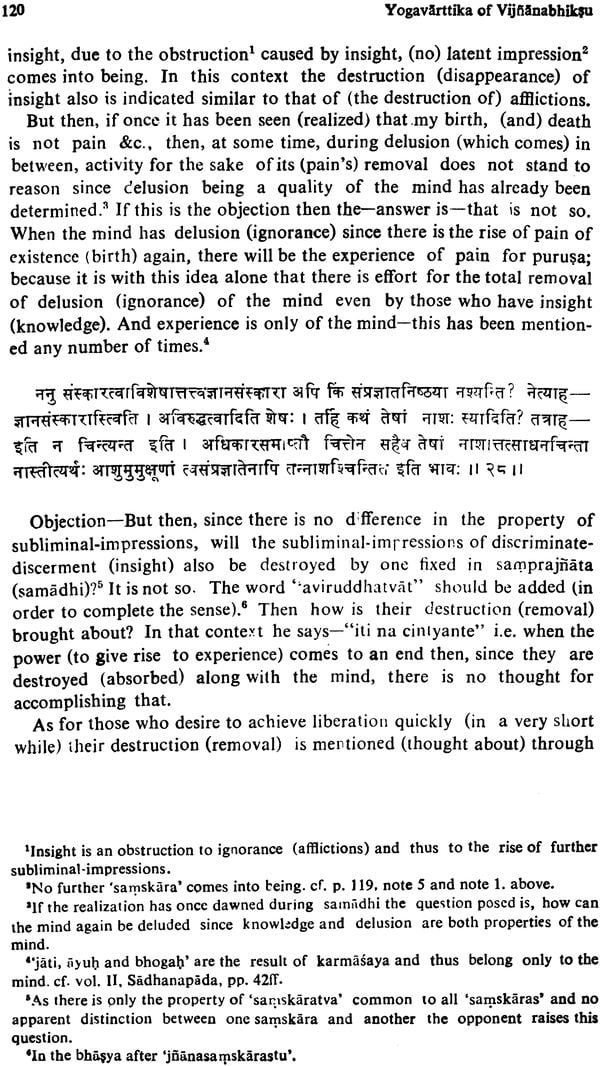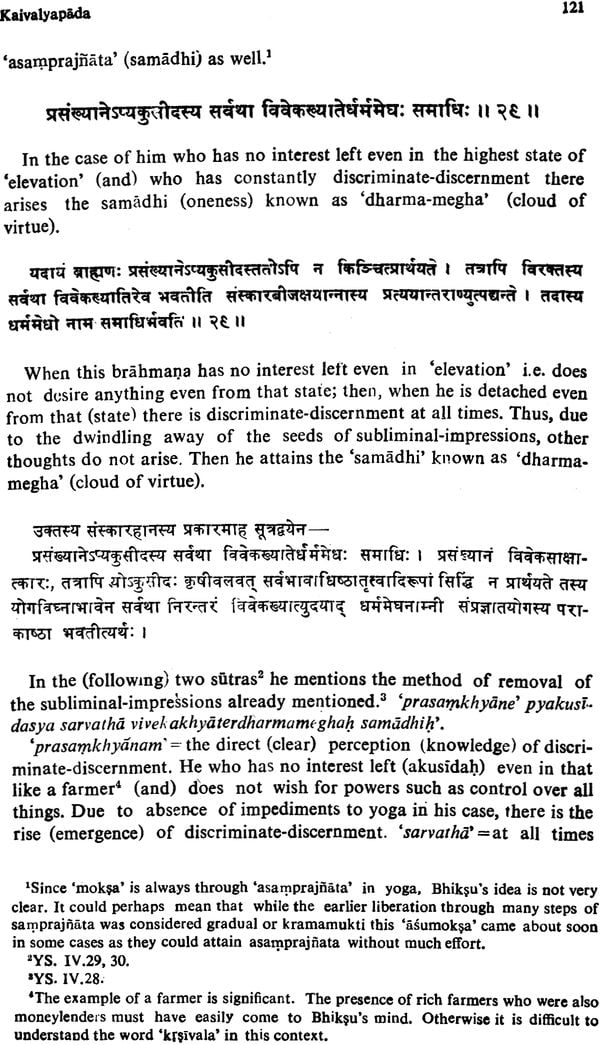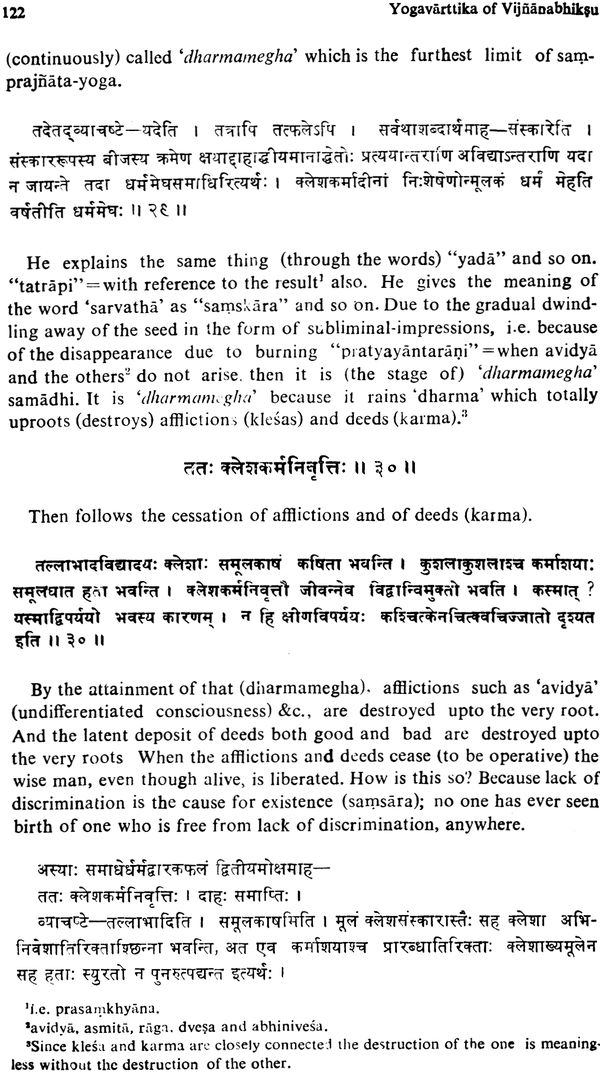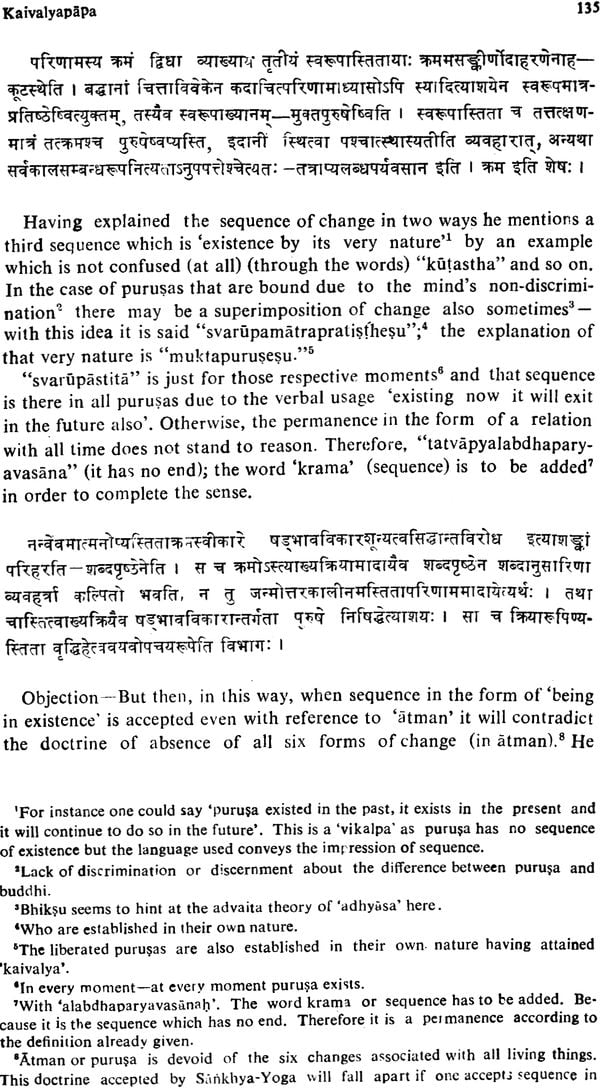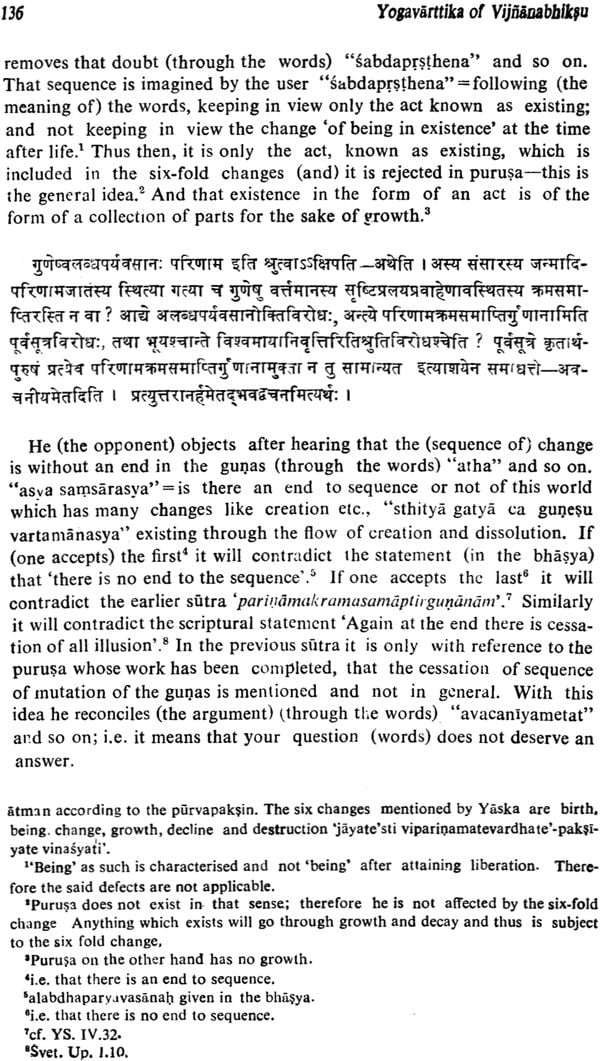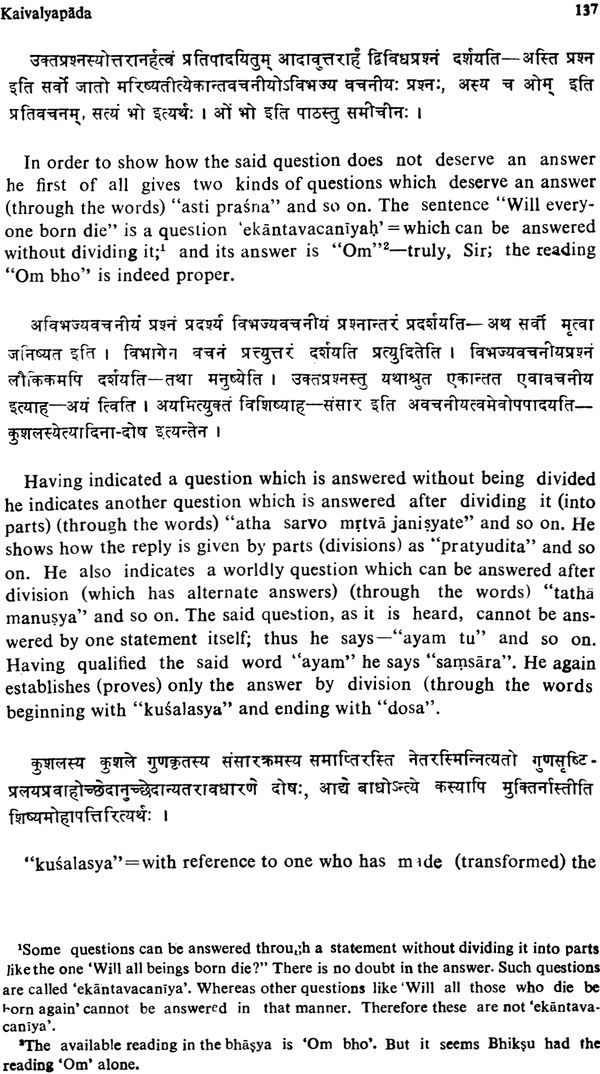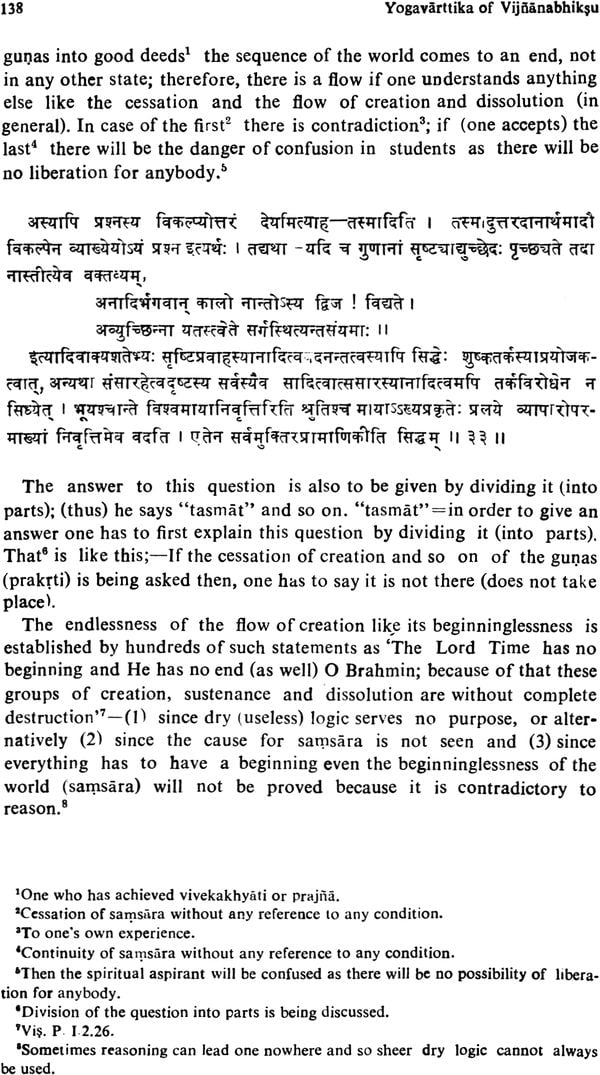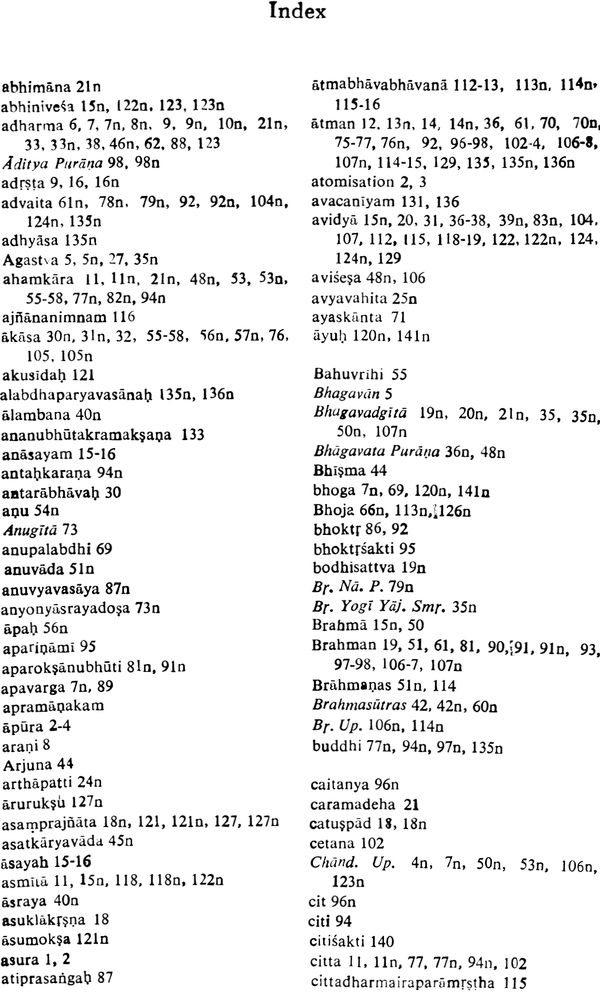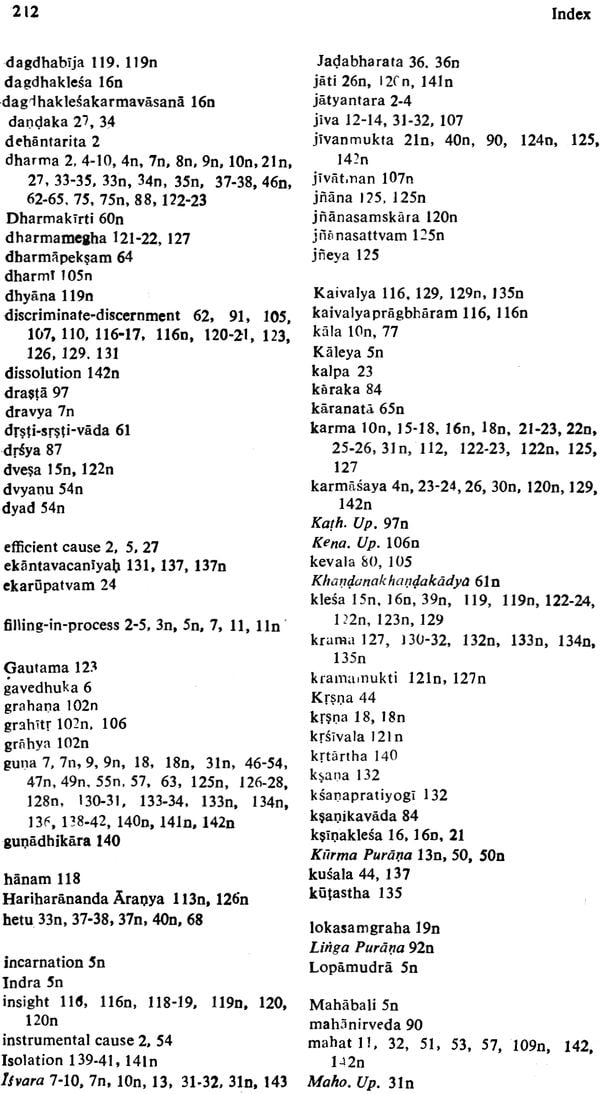
Yogavarttika of Vijnanabhiksu: Vol 4. Kaivalyapada
Book Specification
| Item Code: | IHD93 |
| Author: | T.S. Rukmani |
| Publisher: | MUNSHIRAM MANOHARLAL PUBLISHERS PVT LTD |
| Language: | Text with English trans. and critical alongwith the text and English trans. of the Patanjala Yogasut |
| Edition: | 2020 |
| ISBN: | 9788121504553 |
| Pages: | 227 |
| Cover: | Hardcover |
| Other Details | 9.9" x 6.5" |
| Weight | 560 gm |
Book Description
From the Jacket
An English rendering of the Yogavarttika of Vijnanabhiksu in its entirety has never been attempt so far. This need has been fulfilled by the four-volume series on the Yogavarttika of which this is the fourth volume. The text of the Patanjala Yogasutra and the Vyasabhasya with a new translation are also included in all the four volumes. It is therefore a unique contribution to the world of philosophical literature. It affirms the continuity of religious and metaphysical thought in the unbroken Indian tradition down the ages. A fresh look has also been given to the sutra and the bhasya and the translations are in the current idiom so that it is intelligible to the modern reader, both layman and scholar alike. Its syncretic nature and the difficulty of understanding it without the aid of the sutra and the bhasya has always deterred the undertaking of this work for a detailed study The present work gains added importance due to the critical notes given under every varttika.
About the Author
Dr. T.S. Rukmani is presently chairperson, Hindu Studies, Department of Religion, University of Concordia, Montreal, Canada. Her published works are: A Critical Study of the Bhagavata Purana, with special reference to bhakti (Varanasi, 1970); Yogavarttika of Vijnanabhiksu, 4 vols. (New Delhi, 1981-89); and Sankara: The Man and His Philosophy (New Delhi, 1991). She also contributes research papers regularly in both Indian and International journals.
I am happy that the fourth and last volume of the Yogavarttika series is now completed. This would not have been possible without the constant encouragement from my scholarly friends who saw to it that I did not relax after the publication of the third volume in 1987. my very special thanks to each one of them whom it is difficult to name individually.
In all such undertakings spanning over a period of years, (in this case ten years) there are times when one is tempted to give up due to the pressures in one’s family. There have been many such moments in the past ten years when I have lost the courage and will power to continue with what seemed an endless task. Had it not been for my mother now in her late seventies who never lost hope and goaded me on whenever I despaired this work may not have been completed. Along with my mother another person who shared the enthusiasm and was able to transmit it to me was my husband. He took the responsibility of typing the entire manuscript of all the four volumes which considerably redacted my burden. It is not possible to express in words the sacrifice that these two individuals have voluntarily undergone to see that the work is published as soon as possible.
Mr. Devendra Jain of Munshiram Manoharial Publishers shared the enthusiasm and joy at every stage in the progress of the work and in the process became more personally involved than a publisher normally does. My special thanks are due to him.
My only wish is that this last volume on the Yogavarttika also meets with the same response in the world of scholars that the other three volumes have received.
This is the fourth and last volume in the series on the Yogavarttika of Vijnanabhiksu covering the Kaivalyapada. The same format for distinguishing the three tex’s (the Yogasutra, the Yogasutrabhasya and the Yogavarttika) through different types like 14 pt. black, 12 pt. black and white respectively, has been used. The same texts i.e. the Calcutta edition (Cal. ed.) published by Jivananda Vidyasagara Bhattacarya in 1897, the Chowkhamba Sanskrit Series text (CSS. ci) published in 1935 and the Bharatiya Vidya Prakashan edition (BVP. ed.) published in 197 I have been consulted in preparing the text for this volume. What is different about this volume is the bringing together of some important papers related to the Yogavarttika published in different journals, in the nine appendices, at the end of the work. These papers were written by the author while working on the Yogavarttika and cover a period of nine years, the first paper having been published in 1979 and the last in 1988. These papers even when read independently of the work will enable the reader to form an idea of Vijuianabhiku’s philosophy and general approach to philosophical problems. Thus they form a useful supplement to the body of the work.
The introduction to vol. I deals with many points related to Vijnañabhiksu like his date, his works and his general philosophical outlook. Thus anyone interested can refer to vol. I for such details. The attempt here is only to highlight some important points raised in the Kaivalyarada. In this volume whenever volumes 1, II and 111 have been referred to in the notes the author’s name (Rukmani) has been left out. Thus vol. 1, Samadhipada, vol. II, Sadhanapada and vol. III, Vibhutipda in the notes refer to the first three volumes in this series.
The Kaivalyapäda discusses many points not mentioned earlier in the first three ‘padas’. It starts off by making an interesting statement that ‘siddhis’ can be acquired through birth, through various medicinal herbs, through incantations, through austerities and through ‘saniadhi’. (IV.1) Praktyapura’ is the process by which evolution or creation takes place. The factors that govern this process and the importance of ‘dharma’ and ‘adharma’ in removing the obstacles to the creative causes coming into operation form an important topic in the Kaivalyapada. (IV 2 & 3). It is in this ‘pada’ that there is a discussion on the siddhi’ of creating other minds from one’s own mind (nirmailacitta) (IV.4 & I). While other means can achieve various ‘siddhis’, the Kaivalyapada establishes the supremacy of meditation (samadhi) In acquiring ‘siddhis’ as it is free from ‘karmisaya’. As the yoga continues to act till he gives up the body it is made clear that his karma’ is neither white (ukla) nor black (krsa) and therefore does not give rise to ‘dharma’ and ‘adharma’ or ‘karmaaya’ which binds (IV.6 & 7).
An interesting discussion on how specific ‘vãsanãs’ pertaining to the life of an animal, a human being, a god &e., come into operation in those specific births even after the intervention of many births and after a long time, forms the topic from sütra IV.8 onwards. While asserting that the substance is one the ‘satkaryavada’ of the system is established in the discussion on the past, present and future states of being of any object (IV.l2-14). Opposing the Buddhist Vianavada school, sütras IV. 14 onwards (IV. 14-24) establish the separate identity of the mind and the outside object. In the process the characteristic of the mind to be affected or not to be affected by an outside object is contrasted with the unchanging purua knowing the modifications of the mind at all times (IV.17, 18, 22 & 23). The nature of a yogi and the attainment of‘lcaivalya’ form the subject matter of sutras IV.25-34. This set of sutras deal with the state of mind of a yogi who is moving towards ‘kaivaiya’, The attainment of ‘dharmameghasamãdhi’ and ‘omniscience’ is the prelude to ‘kaivalya’ which dawns almost immediately afterwards, it is interesting to note that ‘kaivalya’ or isolation in described as the attainment of its own nature by both ‘prakrti’, and ‘purua’ in sütra IV.34.
Vijiiauabhiksu continues his attack on a8kara’s Advaita Vedanta in this pada as well calling them ‘ädhunikavedantibruya’ (IV,19, 21) as in the other padas. Nhiksu’s own ‘dual reflection theory’ finds mention in a number of places (IV.19, 21, 22, 23) along with the kartrkarma. virodha’ argument (IV.19, 23). Bhiku’s habit of going to the root of any matter in hand comes out clearly when he discusses in the context of ‘nirmãoacitta’ ((V.4) whether there are many selves (atman) or one self associated with the many created minds. Bhiksu comes up with the theory of ‘nirvikalpajnana’ and ‘savilcalpajnana’ in the context of knowledge and memory (IV.21, 22) and argues that ‘nirvikalpajnana’ or bate knowledge or consciousness belongs to ‘purua’. This then leads to ‘savikalpajnatta’ in the form ‘I am. angry’ and so on. Even when ‘kaivalya’ is defined in the last sutra (IV.34) Bhika makes it a point to repeat that there is ‘kaivalya’ for both ‘prakrti’ and ‘purua’ each reaching its respective natural state. Bhiksu differs from Vacaspati Mira on many a yogic point. Thus his understanding of the stages in ‘moka’ differs from that of Mira (IV.25). His habit of explaining things leaving nothing to the imagination of the reader is evident throughout this pada as well. (1V.2, 4, 13, 14, 21). He thus translates the ‘bhaya’ word by word (IV.6, II, 12, 13, 14, 21, 24, 23), repeats the same argument with different examples and resorts to etymological derviations and analysis of compound words in order to achieve his purpose. Bhiksu quotes profusely from many texts and his great learning is evident throughout the pada.
Vijnanabhikshu a committed theist concludes his Yogavarttika with the prayer that Isvara who is the self in all living being may be pleased with his work.
| Preface | vii | |
| Abbreviations | viii | |
| Introduction | ix | |
| Kaivalyapada | 1 | |
| Appendices | 145 | |
| Appendix 1 | ||
| Patanjali’s Yogasutras A Synthesis of many Yogic Traditions | 147 | |
| Appendix 2 | ||
| Vijnanabhiksu on Bhavapratyaya and Upayapratyaya Yogis in the Yogasutras | 153 | |
| Appendix 3 | ||
| Samprajnata Samadhi in the Patanjali Yoga System Differnece in interpretation between Vascaspati Misra and Vijnanabhiksu | 159 | |
| Appendix 4 | ||
| Vikalpa as defined by Vijnanabhiksu in the Yogavarttika | 166 | |
| Appendix 5 | ||
| Avidya in the system of yoga and an Analysis of the Negation in it | 172 | |
| Appendix 6 | ||
| The Theory of Knowledge in the Yoga System | 177 | |
| Appendix 7 | ||
| Patanjali’s Prajna and Bhartrhari’s Pratibha a comparative study | 183 | |
| Appendix 8 | ||
| Sphota and the Patanjala Yogasutras | 190 | |
| Appendix 9 | ||
| Vijnanabhiksu double reflection Theory of knowledge in the yoga system | 195 | |
| Glossary | 203 | |
| Index | 211 |
